A horse that rushes up or down a hill can take the fun right out of a trail ride. Usually he’ll want to gain speed as he nears the top or bottom of a hill. He may even kick up and buck a little when he gets to the top of a slope.
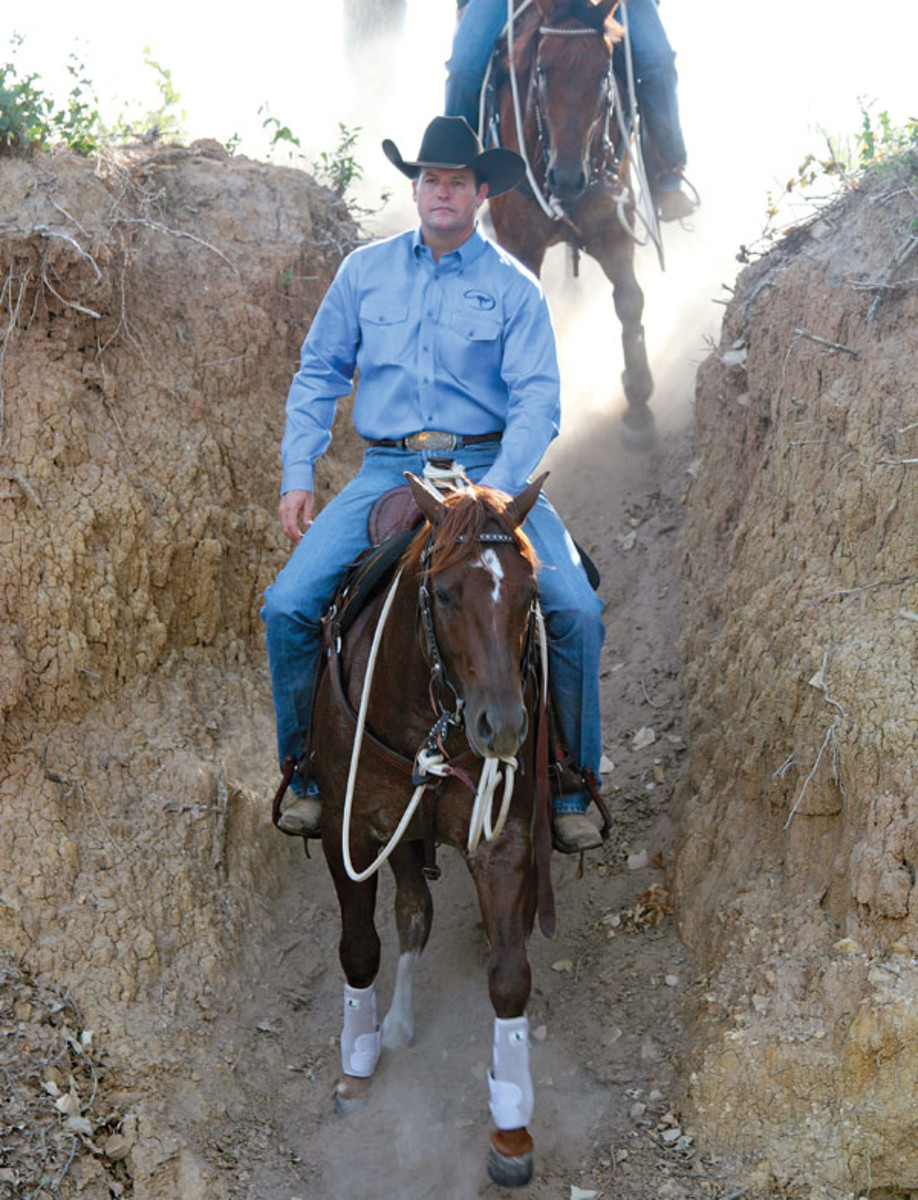
This behavior is unsettling for you, the rider, and it can be dangerous for you both. I’m going to show you what to do if your horse rushes a hill during a ride. You’ll learn to bend him around to get his feet moving at the top or bottom of a slope. This helps him realize that all his hurrying just speeds him to a place where he’s put to hard work—so what’s the rush?
I’ll also give you hill work you can practice on your own, between trail rides. It’ll prepare your horse to tackle hills the way you want him to—nice and easy.
Why Does He Speed Up?
Going up a hill, especially a steep one, your horse wants to go faster to gain momentum that’ll help carry him up. He could go slower, digging in and using his muscles, but that requires more work. So if you don’t insist otherwise, he’ll learn to lunge and plunge.
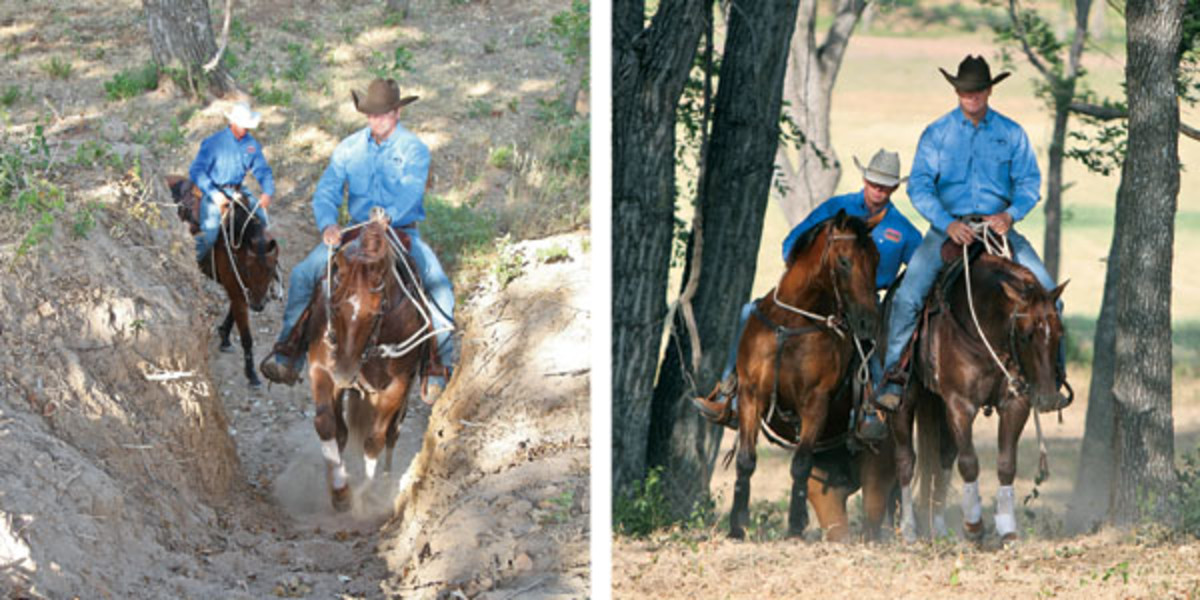
Going down a hill, it actually requires more effort and attention for him to walk slowly and pick a careful path than it does just to ramble on down. So he’ll tend to pick up speed as he goes—especially as he approaches the bottom. Again, it’s up to you to set the pace and maintain it.
Bending and suppling your horse at the top of a rise (when you’re going up) or the bottom (when you’re going down), makes rushing the slope less fun. You’re saying to your horse, “Since you’re in such a hurry to get here, how about now listening to me, moving your feet the way I say, and softening up?” That, along with repeating the hill once or twice rather than just moving on, changes his notion of what hills are all about.
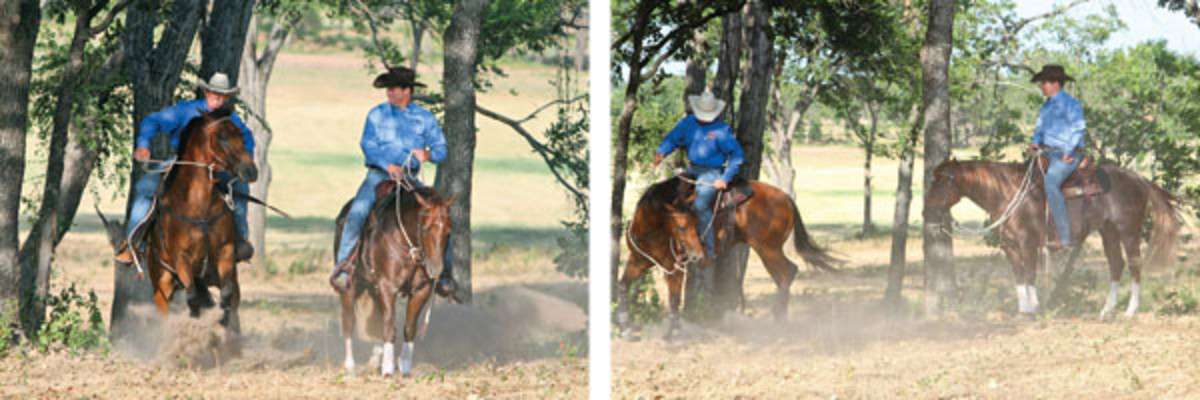
During your practice between actual trail rides, frequent stopping, flexing, and even backing up on a hill will also help override your horse’s inclination to rush. Instead, it teaches him to be patient and wait on you.
How to Respond When He Rushes
Going uphill, don’t be afraid to grab some mane (never the reins) to maintain your balance over your horse’s withers. Then, if your horse starts to speed up as you approach the top of a rise, don’t pull back on the reins and fight with him to stop. Instead, let him gain the top, ask your riding partners to wait for you, and then…
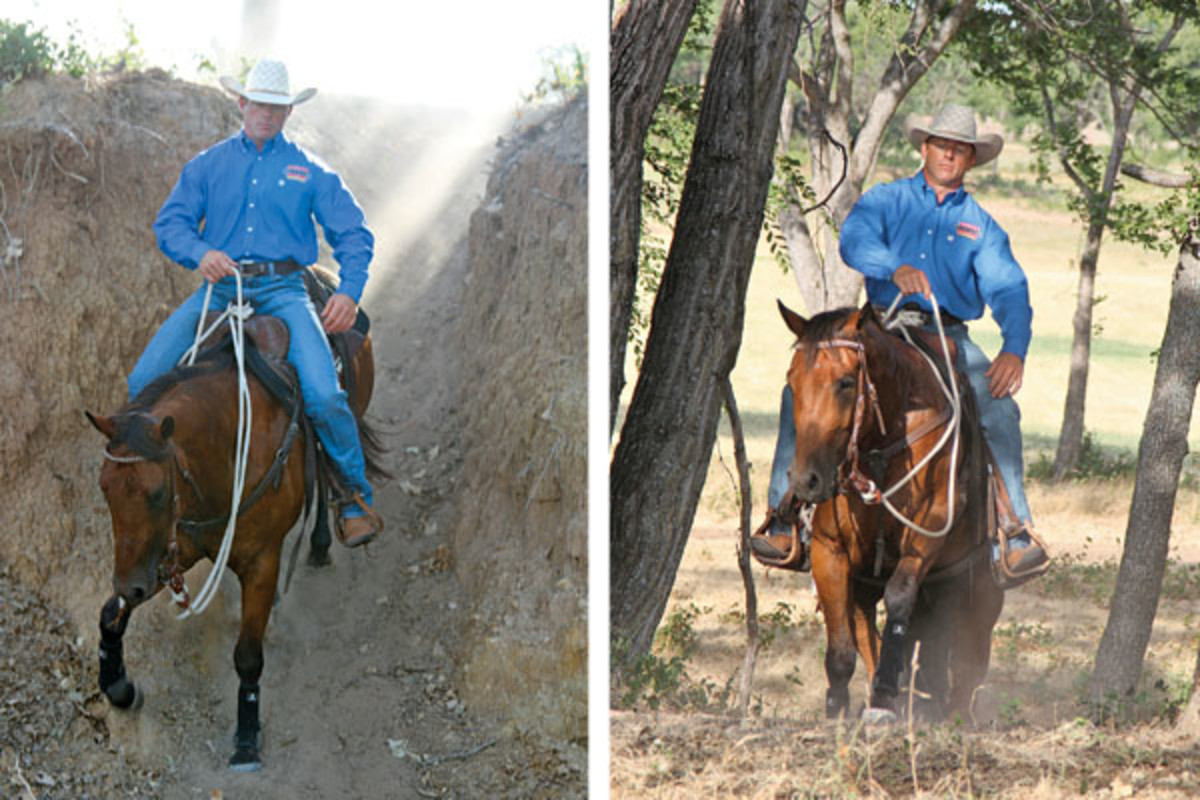
Bend and circle. Draw on one rein to flex your horse’s neck and bend him around in a circle one way, then the other. (You’ll have best success with this if you’ve already taught your horse how to bend—see “Plan Ahead for Your Best Ride,” page 50.) Move him briskly in this manner at a trot for several moments, changing directions often. Then, with your friends’ cooperation, don’t move on. Instead…
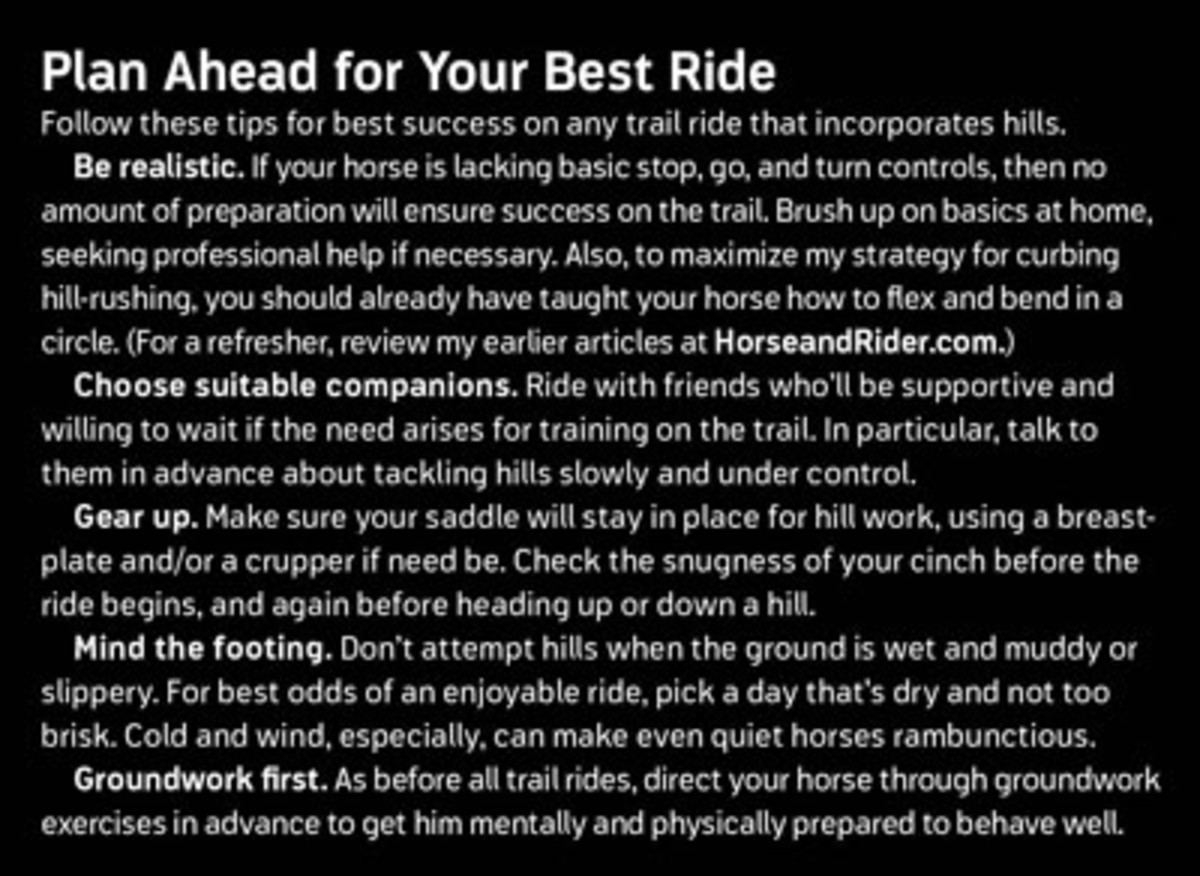
Repeat the hill. Go back down and come up again, asking your horse to moderate his pace this time. (Your riding partners should either wait or accompany you; if they proceed without you, your horse will never settle down.) If this time he climbs the hill more slowly, continue with the ride. If he still tries to rush, flex and bend him some more at the top, then repeat the hill once or twice more. Before long, rushing just won’t seem worth the effort to him.
Same approach downhill. Going downhill, give your horse some rein so he can pick his way carefully, and brace a hand against the saddle horn or grasp the back of your saddle to stabilize yourself. If he starts to speed up toward the bottom, make him pay the price when he reaches it. Bend him around both ways, showing him that hurrying just bought him more work.

Then, as your riding partners wait or accompany you, return up the hill and ask him to come down again more deliberately. Going downhill, you want your horse almost to hesitate between each step, as if he’s waiting for you to tell him what to do. That shows he’s respectful and really paying attention.
This strategy, combined with the practice I describe in the “Homework” box above, will convince your horse that when it comes to hills, easy does it.
Clinton Anderson is a clinician, horse trainer, and competitor. Learn more about his clinics, appearances, and educational materials at DownunderHorsemanship.com. Catch his “Downunder Horsemanship” program (filmed at the ranch in Stephenville, Texas) on RFD-TV or at DownunderHorsemanshipTV.com.






